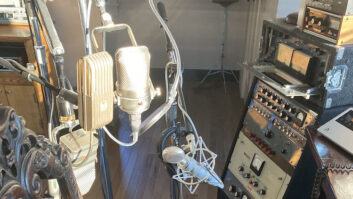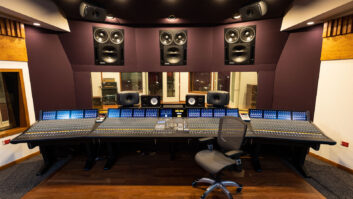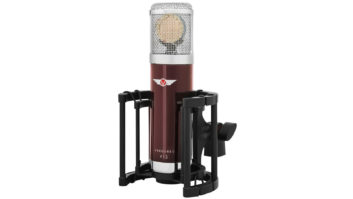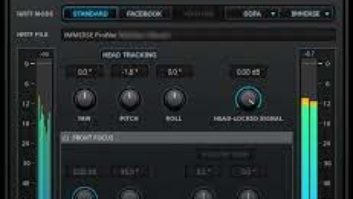TWINCOM OPTOCOMPRESSOR/LIMITEROver the years, Millennia Music & Media Systems has built an enviable reputation for its extremely accurate microphone preamps. Last year, the company garnered additional acclaim for its pristine NSEQ-2 2-channel Parametric Equalizer (reviewed in the October 1999 Mix). The NSEQ-2 broke new ground for Millennia by featuring dual-minimalist circuit paths, one solid-state and the other vacuum tube.
Millennia now enters the world of dynamics processing with the introduction of its TCL-2 Twincom Optocompressor/Limiter. Continuing in the tradition of the NSEQ-2, the 2-channel TCL-2 also features a dual-topology, minimalist audio path design.
THE INSIDE STORYThe TCL-2 is completely balanced from input to output. No transformers or amplifiers are used to unbalance the signal inside the unit. One Class-A, all-discrete amplifier stage provides separate, mirror-matched amps on pins 2 and 3. In order to keep sonic performance as pristine as possible, overall internal gain is kept to 20 dB (10 dB available as make-up gain), and the threshold range is limited to serve signals in the-20dBuHz+30dBu range. For this reason, systems set up for – 10dBV nominal levels may not adequately drive the TCL-2. On the flip side, the TCL-2 can handle up to +30 dBu at its input and over +32 dBu at its output. I had no trouble pumping +26dBu mixes into the TCL-2 from my 02R’s analog outputs.
A front panel button switches silently between vacuum tube (one 12AT7 and two 12AU7 tubes) and discrete J-FET audio paths. And, unlike the dual-topology NSEQ-2, there is no momentary dip in level when switching between tube and solid-state paths. Although front panel bypass switches are provided to defeat processing, input signals are always in-circuit – only the sidechain control is defeated. This design avoids the need for bypass relays and audio path switches that inevitably degrade over time. Sidechain dynamics control is provided by a Vactrol Type 5C1 opto element, which consists of an LED and LDR (light dependent resistor).
CONNECTIONS AND CONTROLSThe TCL-2 makes an immediate impression. Weighing in at a hefty 25 pounds, the two-rackspace unit is built like a tank. But what a gorgeous tank it is! Large, backlit Sifam VU meters, multicolored button switches with inset LEDs and beefy, knurled control knobs provide an elegant contrast to the mirror-finish, black, aluminum front faceplate. (A unique “platinum crackle” finish is also available.)
You’ll want to leave one rackspace empty above and below the TCL-2 when rackmounting the unit. The tubes get so hot you can practically get a suntan off the top chassis panel when the TCL-2 is fully warmed up!
All connections are made on the rear panel. The XLR I/O accepts balanced or unbalanced signals. When feeding the TCL-2 an unbalanced signal, you must shunt pin 3 to ground at the TCL-2’s input. To output to an unbalanced device, pin 3 should be floated at the TCL-2’s output. An earth/audio ground jumper, AC selector (100-120 or 200-240 volts) and IEC detachable AC cord receptacle are also on the rear panel. Notably absent are sidechain inserts, precluding keying and frequency-conscious applications, and there are no internal sidechain filters.
Unlike many optos, the TCL-2’s front panel offers much more than a two-knob control layout. Separate, continuously variable rotary knobs are provided to set threshold, attack, release, ratio and output levels for each channel. (The threshold knob adjusts the signal level to the LDR in the TCL-2’s sidechain.) These controls can be ordered with detents for mastering and other applications, if desired.
Settings for all front panel controls are easy to discern at a distance. My only gripe is that decibel markings are not provided for the output level knobs, but Millennia plans to rectify this in a future revision.
Minimum attack and release times – at 2 ms and 100 ms, respectively – are somewhat slow, but fast enough for everyday compression applications. The wide-ranging ratio control varies from 1.4:1 to 30:1. Although most of the knob’s turn is devoted to higher ratios, I found it quite easy to dial in subtle amounts of processing at the lower settings.
The Sifam meters can be switched to show output or gain reduction levels. Zero adjust trims are provided for the meters. In addition to the previously mentioned tube/solid-state audio path and bypass switches, a stereo link switch and recessed power switch complete the front panel interface.
IN SESSIONA discussion of the TCL-2 would be incomplete without describing its basic sonic signature. That’s hard to do, because the TCL-2 is incredibly transparent. Both the tube and solid-state paths sound beautifully pristine. Depth and spectral balance of input sources are astonishingly well preserved, and every nuance clearly articulated without the slightest hype. The sound is full and beefy without imparting any bass or low-mid emphasis.
The differences between the solid-state and tube paths are quite subtle, yet different enough to double the unit’s value and appeal. The tube path sounds a tad rounder, warmer and more lush, while the solid-state path is more precise and focused.
Compressing male vocals, sung through an AKG C 414-TLII mic and Millennia HV-3 mic preamp, the slightly more euphonic tube path sounded great. Dialing in a 4:1 ratio and 4 dB of gain reduction, the TCL-2’s dynamics processing was totally transparent, adding no audible amplitude modulation artifacts. That said, the TCL-2 is not the easiest compressor to set up. You need to work with the controls a little to avoid pumping at higher ratios. To see what I could get away with, I set the unit to a 30:1 ratio on the same vocalist. With painstaking adjustment of attack and release times, I could attain about 10 dB of gain reduction before pumping became obvious.
On acoustic guitar, picking arpeggios with a flat pick and miked with a DPA 4011 mic, I prefered the more defined solid-state path. Many compressors tend to pump on acoustic guitar, but the Twincom held up nicely. With careful adjustment of the TCL-2’s controls, I could quell the brunt of the track’s overall attack, while preserving the leading edge “twing” of the pick strike. With 4 dB of gain reduction, the track was smooth and sparkly, with no perceivable pumping. And while 4 dB of gain reduction may not seem like an acid test for transparency, it’s important to keep in mind that the Twincom’s gain reduction meters offer true VU ballistics. So peak attenuation levels were probably considerably higher than 4 dB in this case.
I had similar, excellent results compressing lead guitar solos and bass guitar tracks. Depending on whether I wanted a slightly more pillowy or tighter bass sound, I chose either the solid-state or tube path. Again, the differences were subtle, and both audio paths sounded supremely transparent.
Traps are not the TCL-2’s forte. I found the unit to be not quite fast enough to level an uneven kick drum track. And on both kick and snare, the TCL-2’s envelope control was sometimes inconsistent. The same settings would unpredictably preserve or slightly squash the drums’ shell resonance after the stick strike on isolated hits. But, to be fair, most optoelectrical compressors perform rather poorly on drums.
Finally, I fed the TCL-2 a stereo, full-band rock mix. Where subtle smoothing of a mix is desired, the unit sounds awesome. The tube path in particular sounds gloriously rich, without skewing the spectral balance one iota. That said, the TCL-2 is not a strong candidate for fighting the “level wars.” I found it difficult to simultaneously beef-up average levels and control peaks, without introducing audible amplitude modulation artifacts.
CONCLUSIONSFrom a sound quality perspective, the Millennia TCL-2 Twincom sits squarely at the top of the pro audio equipment heap. Those who demand equipment with the highest level of detail, realism, depth and transparency will not be disappointed.
The Twincom shines when using mild to moderate compression on individual tracks, or for subtle smoothing of dynamics in mix bus or remastering applications. It usually takes a little extra tweaking of attack and release times to get the sound just right, but the superlative end result is worth it. Best of all, having two discrete audio paths – tube and solid-state – to choose from makes the Twincom a two-for-one bargain at $2,995 list.







